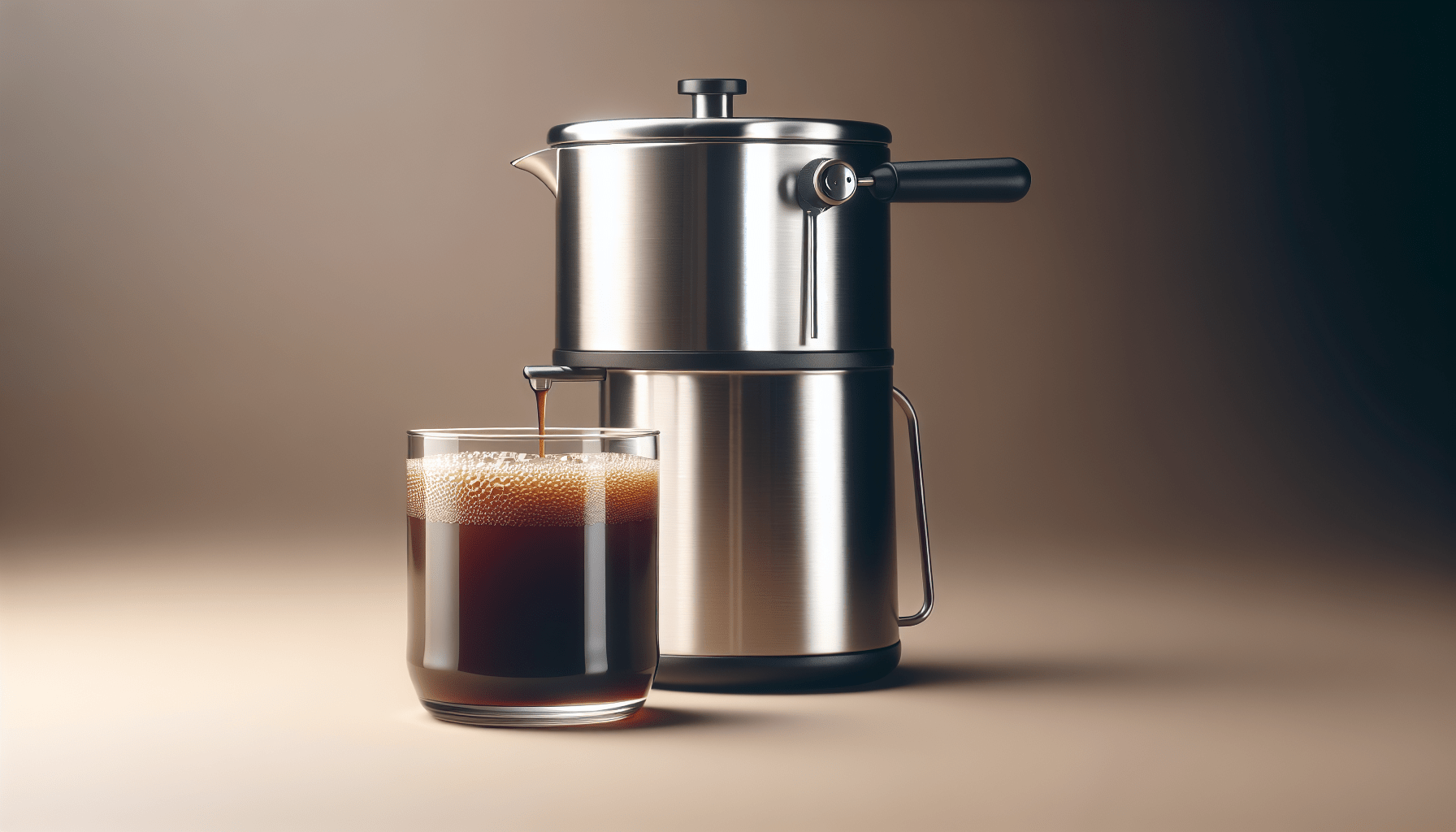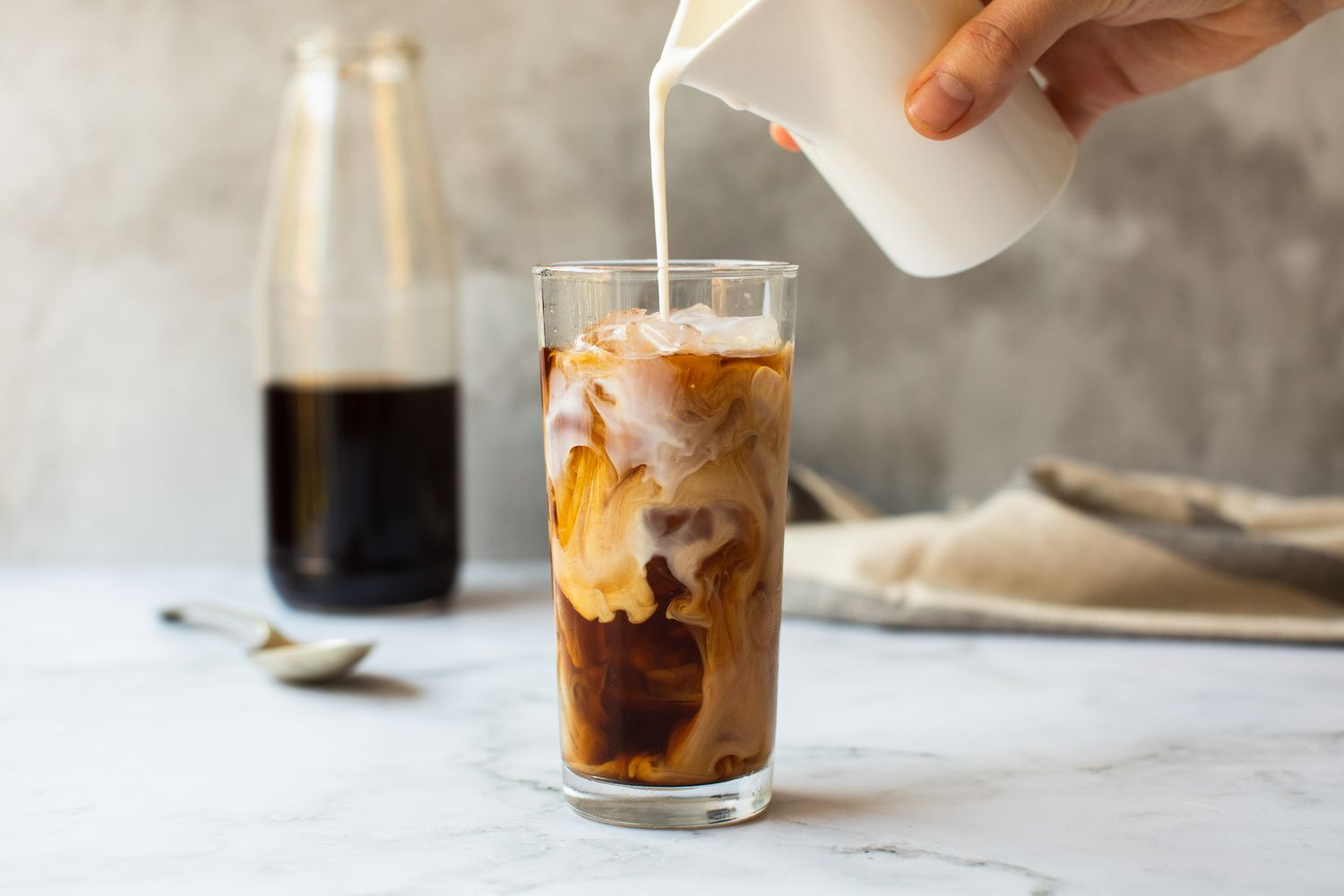Are you having trouble with your cold brew maker? Don’t worry, we’ve got you covered! In this article, we will guide you through troubleshooting common issues that may arise with your cold brew maker. Whether it’s a leaky valve, clogged filter, or uneven extraction, we’ll provide easy-to-follow steps to help you get back to enjoying smooth and delicious cold brew in no time. So, grab your favorite mug and let’s troubleshoot those pesky problems together!
Water Flow Issues
Check water level
If you’re experiencing water flow issues with your cold brew maker, the first thing you should check is the water level. Ensure that the water tank is filled to the appropriate level indicated by the manufacturer. If the water level is too low, the machine may not have enough water to properly flow through the system.
Clean water tank and filter
A clogged water tank or filter can also cause water flow issues. Over time, mineral deposits and impurities can accumulate in the tank or filter, obstructing the water flow. To resolve this, clean the water tank and filter thoroughly according to the instructions provided by the manufacturer. Regular cleaning will help maintain the optimal functioning of your cold brew maker.
Inspect water pump
If the water level is sufficient and the tank and filter are clean, but you’re still experiencing water flow issues, it’s time to inspect the water pump. The water pump is responsible for pushing the water through the brewing process, so any malfunction or blockage in the pump can cause a disruption in the flow. Check for any visible signs of damage or debris around the water pump. If necessary, contact customer support for further assistance in resolving the issue.
Power Problems
Check power connection
When facing power problems with your cold brew maker, start by checking the power connection. Ensure that the machine is properly plugged into a functioning outlet. Sometimes, a loose connection or a faulty extension cord can cause power issues. Try unplugging the machine and plugging it back in securely to see if this resolves the problem.
Test power outlet
If the power connection seems fine, it’s time to test the outlet itself. Plug another device into the same outlet to determine if it’s delivering electricity. If the outlet isn’t providing power, check your circuit breaker and reset it if necessary. Alternatively, try plugging your cold brew maker into a different outlet to see if that resolves the power problem.
Inspect power cord
If the power connection and outlet are both working properly, inspect the power cord of your cold brew maker. Look for any visible signs of damage such as frayed wires or cuts. A damaged power cord can prevent the machine from receiving the necessary electricity to operate. If you notice any issues with the power cord, it may need to be replaced. Contact customer support or consult the user manual for guidance on obtaining a replacement power cord.
Leaking or Dripping
Check for loose or damaged parts
If your cold brew maker is leaking or dripping, the first step is to inspect for any loose or damaged parts. Check all the connections, valves, and seals for any signs of looseness or wear. Tighten any loose parts and replace any damaged components to ensure a secure and watertight setup.
Clean and tighten seals
Leaking or dripping can also occur if the seals in your cold brew maker are dirty or worn out. Clean the seals with a damp cloth to remove any debris or residue that may be hindering proper sealing. Additionally, make sure to tighten the seals firmly to create a secure seal and prevent any leaks during the brewing process.
Replace broken components
If you’ve checked for loose parts and cleaned/tightened the seals but the leaking or dripping persists, it may be necessary to replace any broken components within your cold brew maker. Consult the user manual or contact customer support to obtain the appropriate replacement parts. Replacing broken components will help ensure a leak-free brewing experience.
Clogging or Slow Brewing
Clean the brew basket
If you find that your cold brew maker is clogging or brewing slowly, it’s possible that the brew basket is dirty or clogged with coffee grounds. Remove the brew basket from the machine and thoroughly clean it. Rinse away any residue, and use a brush to dislodge any particles that may be obstructing the flow of water. Ensure the brew basket is completely dry before reinserting it into the cold brew maker.
Adjust grind size
The grind size of your coffee grounds can impact the brewing process. If you’re experiencing clogging or slow brewing, consider adjusting the grind size. Finer grounds can result in a slower extraction process, while coarser grounds may allow water to flow more freely. Experiment with different grind sizes to find the optimal one for your cold brew maker.
Descale the machine
A build-up of mineral deposits can cause clogging or slow brewing in your cold brew maker. To address this, descaling the machine is crucial. Refer to the user manual for specific descaling instructions tailored to your cold brew maker’s model. Descaling agents can help dissolve and remove any mineral scale buildup, restoring optimal performance.
Over-Extraction or Weak Brew
Adjust brewing time
If your cold brew coffee tastes over-extracted or weak, adjusting the brewing time may help. Brew time directly affects the strength and flavor of your cold brew. Experiment by decreasing or increasing the brewing time to find the ideal duration that suits your taste preferences. Remember to keep track of adjustments for future brews.
Review coffee-to-water ratio
Finding the right coffee-to-water ratio is essential for achieving the desired strength in your cold brew. If your coffee tastes weak, try increasing the amount of coffee grounds you use or decreasing the water. Conversely, if your brew is over-extracted, reduce the coffee grounds or increase the water volume. Take note of any adjustments made and refine the ratio to achieve the perfect balance.
Use fresh coffee beans
The freshness of your coffee beans significantly impacts the flavor and strength of your cold brew. Stale or old coffee beans can result in a weak brew. Ensure you are using freshly roasted coffee beans for the best flavor. If necessary, consider investing in a coffee grinder to grind the beans just before brewing for maximum freshness.
Temperature Issues
Check heating element
If you’re experiencing temperature issues with your cold brew maker, the heating element may be the culprit. Inspect the heating element for any visible damage or signs of malfunction. A faulty heating element can cause inconsistent water temperature, leading to under or over-extraction of flavors. If you suspect an issue with the heating element, contact customer support for assistance.
Calibrate the temperature control
Some cold brew makers come with temperature control options. If your machine offers this feature and you’re facing temperature issues, check the temperature control settings. Ensure that the machine is set to your desired brewing temperature. Consult the user manual for instructions on calibrating the temperature control if necessary.
Monitor brewing environment
The temperature of the brewing environment can also affect the resulting brew. If your cold brew maker is placed in a very cold or hot location, it may struggle to maintain the optimal temperature for brewing. Consider moving the machine to a more suitable area, away from extreme temperatures, to ensure consistent and desirable results.
Grinding Problems
Clean or replace grinder
If you’re experiencing grinding problems, such as inconsistent grind size or unusual noises, it may be necessary to clean or replace the grinder in your cold brew maker. Follow the instructions in the user manual to clean the grinder thoroughly, removing any trapped coffee particles or debris. If cleaning doesn’t resolve the issue, consult customer support for guidance on how to replace the grinder.
Adjust grind settings
If the grind size isn’t consistent or doesn’t match your desired brewing method, adjusting the grind settings is crucial. Most cold brew makers provide options to customize the grind size according to your preferences. Experiment with different settings until you achieve the desired grind size for your cold brew. Remember to make incremental adjustments and test the grind size with each change.
Ensure proper bean storage
For optimal grinding performance, it’s essential to store your coffee beans properly. Improperly stored beans can become stale and affect the grinding process. Ensure your coffee beans are stored in an airtight container away from direct sunlight and heat. This will help maintain their freshness and ensure consistent grind quality.
Timer Malfunction
Reset or reprogram the timer
If your cold brew maker’s timer is malfunctioning or not working as expected, try resetting or reprogramming the timer. Consult the user manual for instructions on how to reset the timer to its default settings. Alternatively, if the timer allows, try reprogramming it based on your desired brewing schedule.
Check battery for the timer
In some cold brew makers, the timer may be powered by a battery. If the timer isn’t functioning properly, check the battery. Replace the battery if necessary to ensure the timer has sufficient power to operate correctly. Refer to the user manual for guidance on battery replacement.
Contact customer support
If you’ve tried resetting the timer and replacing the battery but are still experiencing issues, it’s advisable to contact customer support. They will have a deeper understanding of your specific cold brew maker model and can provide further troubleshooting steps or arrange for repairs if needed.
Strange Noises
Check for loose parts
Unusual noises coming from your cold brew maker can be a sign of loose parts. Inspect the machine carefully, looking for any visibly loose components. Tighten any loose parts carefully, ensuring not to overtighten. Securing loose parts can often eliminate or minimize strange noises during operation.
Lubricate moving components
Over time, friction between moving components in your cold brew maker can cause squeaking or grinding noises. To address this, lubricate the moving parts with a food-grade lubricant as recommended by the manufacturer. Proper lubrication will reduce friction, ensuring smooth and quiet operation.
Inspect motor or pumping mechanism
If the strange noises persist after checking for loose parts and lubricating the machine, it’s crucial to inspect the motor or pumping mechanism. Unusual sounds from these components may indicate a more significant issue that needs attention. Contact customer support for guidance on inspecting or repairing the motor or pumping mechanism.
Error Messages or Lights
Refer to user manual
If your cold brew maker displays error messages or lights, consult the user manual provided by the manufacturer. Error messages often come with specific codes or instructions to troubleshoot the issue. Follow the guidelines in the manual to identify and address the problem causing the error message or light.
Reset the machine
Sometimes, a simple machine reset can resolve error messages or lights. Refer to the user manual for instructions on how to reset your particular cold brew maker. Resetting the machine can often clear any temporary glitches or software issues, allowing it to function properly again.
Contact customer support if necessary
If the error messages or lights persist despite following the user manual’s instructions and resetting the machine, it’s time to reach out to customer support. Provide them with the specific error code or details of the issue you’re experiencing. They will be able to provide further assistance, including arranging for repairs or replacements if needed.
By following the troubleshooting steps outlined above, you should be able to effectively address various issues that may arise with your cold brew maker. Remember to always consult the user manual provided by the manufacturer for model-specific instructions and contact customer support when necessary. With proper troubleshooting and maintenance, you can continue enjoying delicious cold brew with a fully functional machine.




